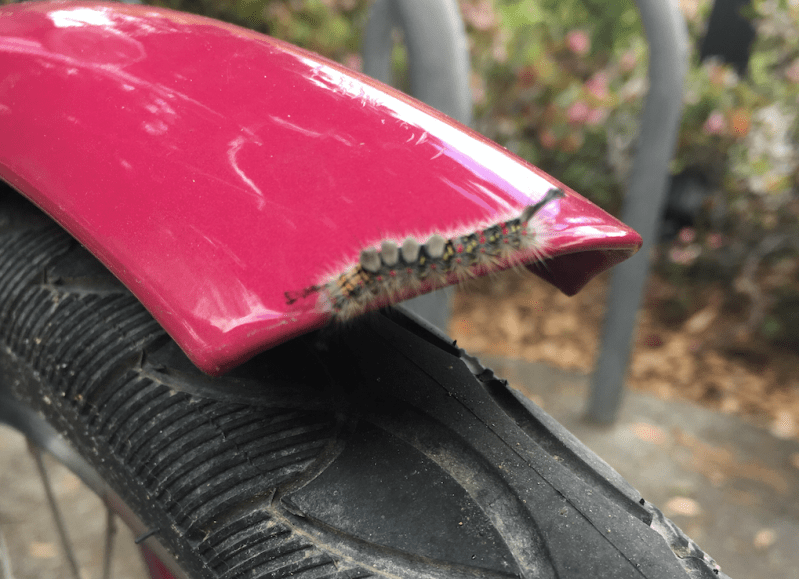It’s caterpillar season — western tussock moth caterpillar season, to be exact.
Around the beginning of each spring quarter, small, fuzzy creatures start dangling from branches of trees and perching atop unwatched bicycle seats. According to campus Grounds Manager Ted Tucholski and University Arborist Michael Gladden, an excessive number of caterpillars may be due to climate fluctuations, the number of natural predators, and the health of trees, among other factors.
“Trees that are stressed tend to draw in pests, while trees that are healthy repel them,” Gladden said. He explained that if campus trees were perfectly healthy, we would still see some caterpillars, just fewer than we have now.
The large caterpillar population that has become characteristic of the spring quarter experience prompts a flurry of memes and op-eds each year. Students complain that dangling caterpillars are hard to spot while biking until they hit you in the face. Western tussock moth larvae also emerge around Admit Weekend, when Stanford hopes to present its best face to newly admitted students.
The caterpillars’ reputation has evoked concerns from potential students. In April 2017, a College Confidential poster wrote, “one of my friends visited Stanford and apparently caterpillars harass and terrorize the student population? can anyone confirm?”
Due to both visitor complaints and concerns about tree health, Stanford’s grounds management eliminates a number of caterpillars each year. Tucholski emphasized that this decision is not directly related to Admit Weekend, but rather a response to general campus needs.
Gladden says if there are too many western tussock moth caterpillars, they harm the oak trees they gravitate toward by eating the trees’ leaves. Cocoons can also cause minor allergic reactions upon contact with people’s skin, prompting concern for student and staff well-being.
According to Tucholski, caterpillar reduction involves power washing — knocking caterpillars off the trees with high-powered streams of water, and “low toxicity insecticides.” Stanford tried deploying natural predators in the past.
Residential and Dining Enterprises informed students on Monday that the areas around Stern Hall, Wilbur Hall, Crothers, Arrillaga Family Dining Commons, Toyon Hall and Kimball Hall will be sprayed overnight on May 2 with a “very diluted solution of a product called ‘Conserve.’” The notice said that the caterpillars are “extremely damaging” to the trees and can also cause skin irritation in sensitive individuals.
This year, Gladden hopes a “compost tea,” a liquid made of compost and beneficial bacteria that will be injected into the soil, will also improve oak tree health and thereby decrease the number of caterpillars. The compost tea solution could slowly but steadily decrease the moth population over a number of years.
“Our goal is not to exterminate all the caterpillars or moths,” Tucholski said. “It’s just to keep their numbers mitigated…everything has to be in balance.”
This article has been corrected to better reflect that the number of campus caterpillars relates to multiple factors, not just to the health of trees.
Contact Jasmine Kerber at jkerber ‘at’ stanford.edu.
